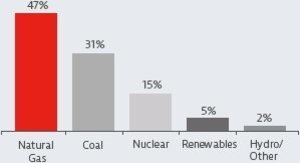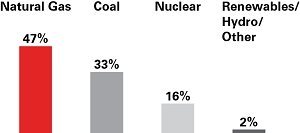 Two professors in India have done the math and found that
there’s plenty of available land in India (much of it on rooftops)
to power its billion people on solar energy alone.
And solar uses less water than nuclear or coal, also as we already knew for the U.S.
Two professors in India have done the math and found that
there’s plenty of available land in India (much of it on rooftops)
to power its billion people on solar energy alone.
And solar uses less water than nuclear or coal, also as we already knew for the U.S.
Today in The Hindu,
India can meet energy needs sans N-power: Study,
According to their study, 4.1 per cent of the total uncultivable and
 waste land area in India is enough to meet the projected annual
demand of 3,400 terawatt-hour (TWh) by 2070 by solar energy alone (1
terawatt-hour per year equals 114 megawatts). The land area required
will be further reduced to 3.1 per cent “if we bring the other
potential renewable energy sources of India into picture”,
they claim. They conclude that land availability is not a limiting
constraint for the solar source as believed. According to their
study, 4.1 per cent of the total uncultivable and waste land area in
India is enough to meet the projected annual demand of 3,400
terawatt-hour (TWh) by 2070 by solar energy alone (1 terawatt-hour
per year equals 114 megawatts). The land area required will be
further reduced to 3.1 per cent “if we bring the other
potential renewable energy sources of India into picture”,
they claim. They conclude that land availability is not a limiting
constraint for the solar source as believed.
waste land area in India is enough to meet the projected annual
demand of 3,400 terawatt-hour (TWh) by 2070 by solar energy alone (1
terawatt-hour per year equals 114 megawatts). The land area required
will be further reduced to 3.1 per cent “if we bring the other
potential renewable energy sources of India into picture”,
they claim. They conclude that land availability is not a limiting
constraint for the solar source as believed. According to their
study, 4.1 per cent of the total uncultivable and waste land area in
India is enough to meet the projected annual demand of 3,400
terawatt-hour (TWh) by 2070 by solar energy alone (1 terawatt-hour
per year equals 114 megawatts). The land area required will be
further reduced to 3.1 per cent “if we bring the other
potential renewable energy sources of India into picture”,
they claim. They conclude that land availability is not a limiting
constraint for the solar source as believed.
The graph above shows land occupation needed to generate 1 gigawatt hour (1GWh)
for each of coal, nuclear, hydroelectric, and solar.
It is Figure 3 from the actual study,
Is land really a constraint for the utilitzation of solar energy in India?
by H. Mitavachan and J. Srinivasan, Current Science, Vol. 103, No. 2, pp. 163-168, 25 July 2012.
More from the Hindu article, with graphs from the journal article:
Continue reading →








